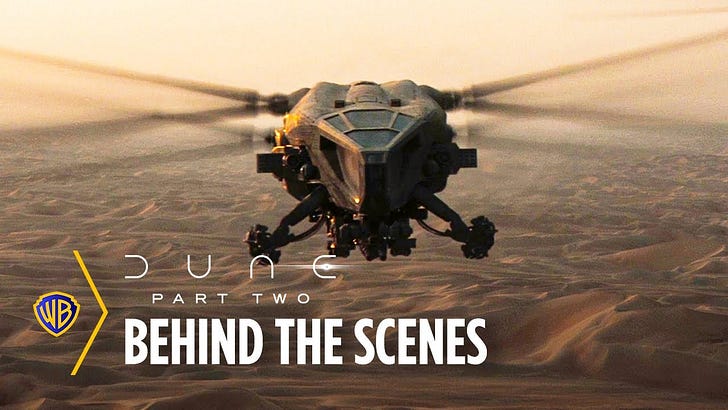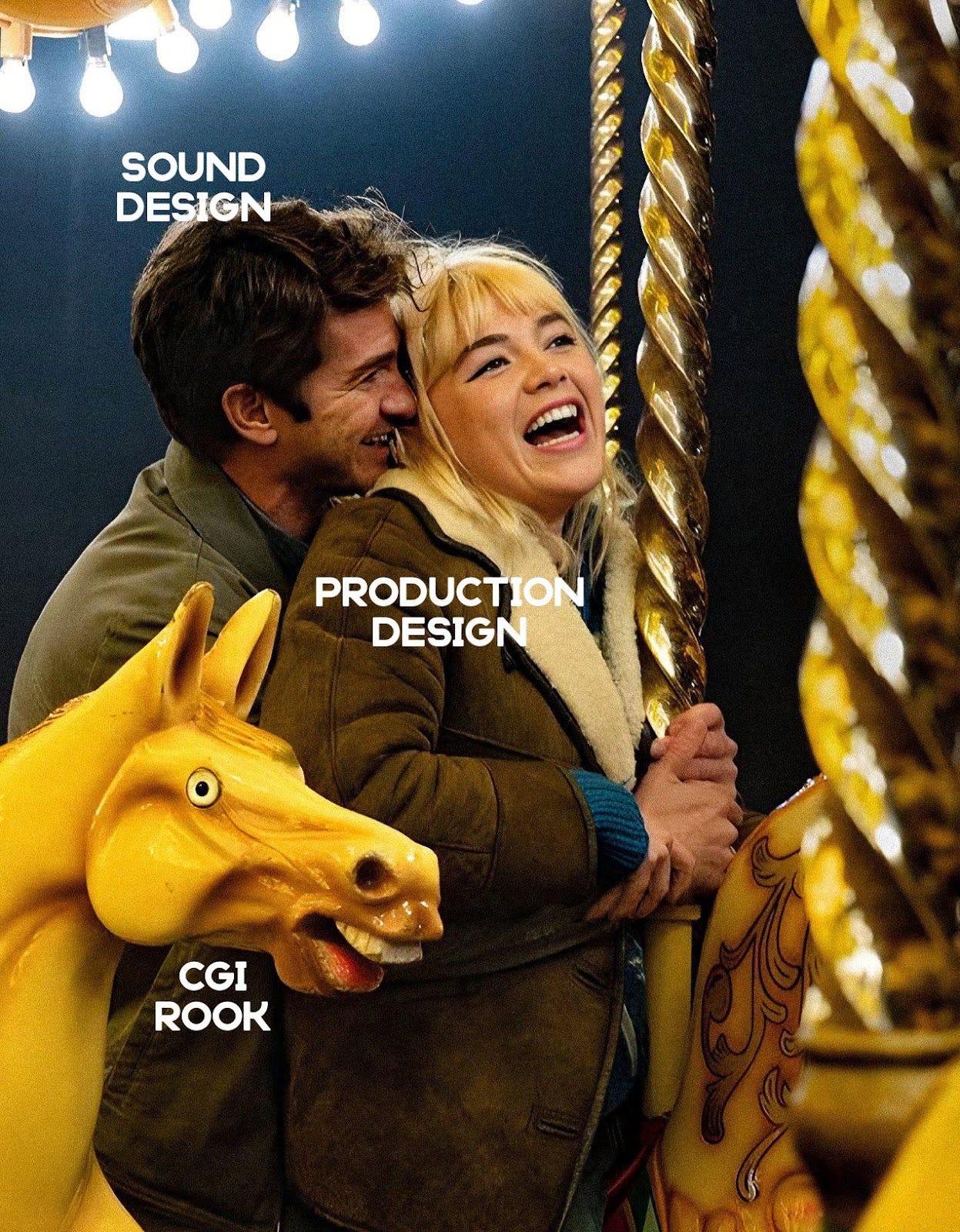Numlock Awards is your one-stop awards season newsletter. Every week, join Walt Hickey and Michael Domanico as they break down the math behind the Oscars and the best narratives going into film’s biggest night. Today’s edition comes from Michael.
This year, the nominees for Best Visual Effects have a storied history with the Oscars. You have:
Dune: Part Two, coming off of a win in this category three years ago for the first installment.
Kingdom of the Planet of the Apes is part of a franchise that has consistently been nominated in this category for the previous three entries in the reboot.
Alien: Romulus is part of a larger cinematic universe that previously notched wins for 1979’s Alien and 1986’s Aliens.
Wicked, of course, borrows from the visual language of The Wizard of Oz, which earned a Best Special Effects nomination in 1939 (weirdly, both Oz and Gone with the Wind lost that year to The Rains Came, a movie with a bunch of white people playing Indian people).
Finally, Better Man clearly has its roots in 2010’s winner Inception, since the idea of this movie — a biopic in which Commonwealth superstar Robbie Williams is portrayed as a CGI chimp — is something that only could have been incepted into studio executives’ brains to make them spend $110 million on this project.
Dune: Part Two
The Dune crew is riding high off of their previous win in this category as well as seven nominations from the Visual Effects Society Awards, just edging out Kingdom’s six nominations.
And Dune: Part Two is the bigger, louder, more ambitious installment of the two. Where the first movie gave us a sandworm attack on a harvesting ship, the second gives us multiple instances of Paul Atreides and co. riding sandworms over Arrakis. Gladiator battles, trippy space-time continuum lapses, and raids on the Harkonnen are all here in Dune: Part Two.
Paul Lambert, the supervisor for Dune: Part Two, is three for three so far in his Oscar run, with previous wins for Blade Runner 2049, First Man, and Dune. And how many other films this year had a dedicated Worm Unit?
Kingdom of the Planet of the Apes
Huge shout-out to the team behind Kingdom of the Planet of the Apes, whose 4K release includes the Raw Cut. The Raw Cut is a split-screen way to watch the movie, with and without CGI apes, so you can see the actors in their dotted-face glory doing their best ape impressions.
This is the first movie in the reboot series not to center around Andy Serkis’ Caesar — Serkis is the legendary mo-cap actor behind Gollum, who’s advocated for recognition for mo-cap performances at the Oscars for years. The Raw Cut is a great step toward dropping the veil so viewers can actually see the performances these people are putting in before the VFX team changes their appearance completely.
I’d really recommend this interview with Erik Winquist, one of the supervisors at Weta, who oversaw the visual effects on the film. He talks about how he read The World Without Us to envision what a human-less world would look like several generations down the line, how they built actual costumes for the apes for inspiration on how to render them digitally, and how the river sequence was 1.2 petabytes of data. (Okay, I don’t totally understand that last one, but this is Numlock after all, so I figure you all have a better grasp of how huge that is.)
Alien: Romulus
This may be the most controversial of the nominees since — spoiler alert if you avoided all discourse around this movie — the movie features the late Ian Holm, brought back as an animatronic. The original Alien came out in 1979 and didn’t require a cast of his face, but the filmmakers got their hands on a 1999 cast when he was playing Bilbo Baggins, which helped bring the animatronic to… well, not life, necessarily, but something close to it.
But it’s never a great sign when your director later says he “fixed” the CGI around the animatronic, as moviegoers weren’t huge fans of Rook’s uncanny appearance.
Speaking to Empire Magazine, director Fede Álvarez said, “We just ran out of time in post-production to get it right. I wasn’t 100 percent happy with some of the shots, where you could feel a bit more the CG intervention. So, for people that react negatively, I don’t blame them.”
Wicked
I’ll just be upfront here: the visual style of Wicked is not my thing. Like a lot of recent big-budget movies, it has a very digital look that is hard on the eyes.
That being said, the crew actually did build a lot of practical pieces, including a lagoon for Shiz University, an actual train for the ride to the Emerald City, and the Wizard’s one-ton head.
Unlike Kingdom, a movie that relies on mocap for its animals, Wicked instead relied wholly on animation for characters like Dr. Dillamond (the talking goat) or the flying monkeys. The scene where Elphaba creates the first flying monkey was one of the most difficult, according to visual effects supervisor Pablo Helman.
“How is he feeling? Is he feeling pain or not? How does he mitigate that? There’s a lot of ambiguity right there. And this is one of the most difficult things you can do in CG. So having done that for different projects and different movies, I’m very careful about how we portray [ambiguity], and what kind of tools we give the director to be able to model that in post.”
Better Man
Our third ape-centric movie is the Robbie Williams biopic Better Man.
Listen, are we at the point where a fully CGI animal can lead a movie? I’ll let you be the judge of that:
It’s not to say it’s not impressive, but there’s something unsettling about watching an animated chimp portray our human protagonist for 135 minutes. Weta, who also worked on Kingdom, tried to keep the balance from being either too human or too chimp, hoping to create a blend that would allow audiences to just sink into the movie instead of focusing on the ape of it all.
Portraying Williams as a chimp had a lot of novel problems for the artists to solve. As Luke Millar, one of the nominated artists, explains, “[Chimps’] teeth always look very brown and dirty and not particularly attractive. But he’s a multimillion album-selling pop star who can afford the best dental care available. So that was definitely one of the sort of mindsets — we go chimp, but it’s the most cared for version of a chimp.”
“We usually do stunts and fights,” explained Weta motion capture assistant director Emma Cross. “And then we were thrown into dancing apes.”
I’ll leave you all with this: like many Americans, I had only a passing familiarity with Robbie Williams. But his appearances on Graham Norton are some of the best, so if you need a detox from all of the animated apes we went over today, may I present a best-of compilation.


